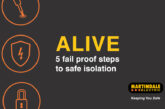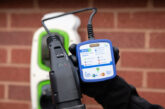
The experts at Martindale Electric take a close at requirements for microwave leakage testing in office and catering locations.
When the PAT testing Code of Practice was updated in November 2012, the microwave leakage test was removed. The first reason for removal was because it was decided that PAT applied to the electrical safety of an appliance, whereas the microwave leakage test is secondary to the initial PAT test.
Required standards
Secondly, this test should be carried out using the correct equipment. It was felt that there were too many low-cost devices being used to measure microwave leakage that do not meet the required standard. The routine tests are defined in BS EN 60335-2-25:2002, for domestic microwave ovens, and in BS EN 60335-2-90:2002, for commercial microwave ovens.
The removal of the test from the Code of Practice does not mean it should no longer be carried out at all, however. A risk assessment should be undertaken to determine what testing is required and how often. Microwave ovens in commercial premises, such as staff areas, may be intensively used and therefore more likely to be a problem. This applies even more in catering establishments.
The leakage test is designed to check there is no harmful radiation leaking from the appliance. This can happen if door seals are faulty, or if the shielding has been compromised in any way. By using a proper microwave leakage detector, you’ll clearly see if there is any dangerous leakage.
The test must be carried out while the microwave is in operation. It is important to note that the tester must be exactly 50mm away from the microwave during the test. A good leakage tester will have a spacer that ensures this distance is always maintained.
Microwave leakage is expressed as microwave power density in mW/cm2. Leakage should not exceed 5mW/cm2 (sometimes expressed as 50W/m2) when measured at a distance of 50mm or more. The tester should be passed over the whole of the appliance, especially around the door seals, to check for leakage.
If the result exceeds the recommend limit, the microwave should be removed from service and repaired or disposed of safely. It is also important to check that the microwave power output hasn’t decreased, as this could lead to food poisoning.
The Martindale TEK500 microwave leakage detector is designed to test for microwave leakage in accordance with the routine tests in the standards mentioned earlier in this article and has featured in previous editions of the Code of Practice.
The TEK500 kit provides calibrated beakers and a thermometer with a guide to calculation so you can check the power output is correct.
Browse the TEK500 Kit product data sheet here








